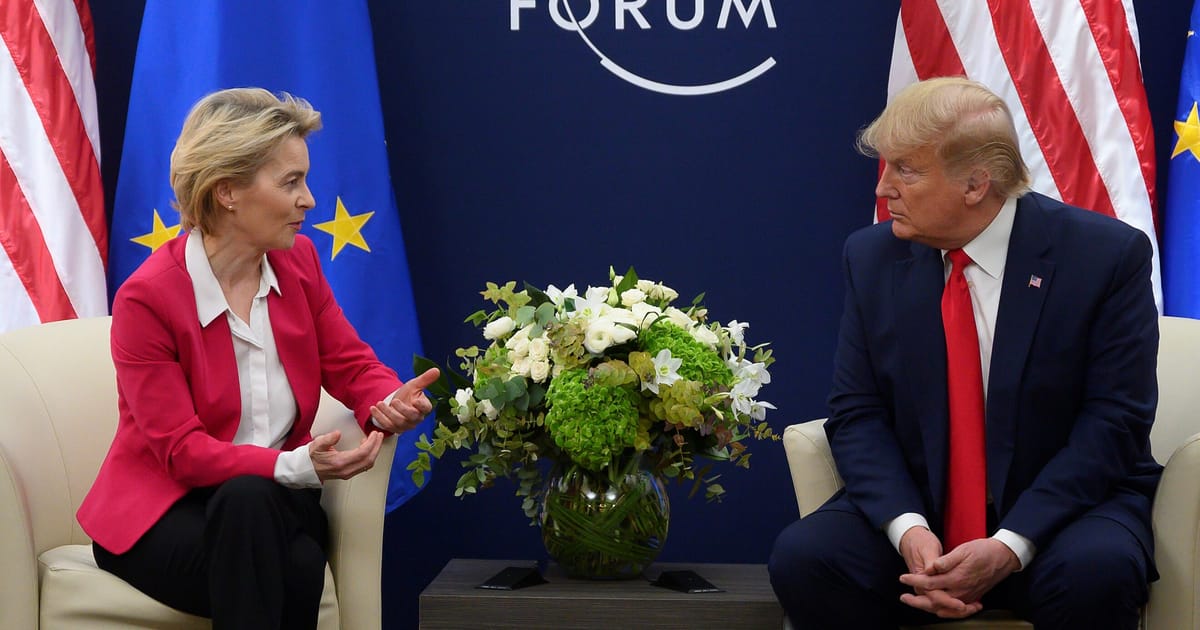

In a development reflecting a potential thaw in transatlantic trade tensions, European Commission President Ursula von der Leyen is set to meet with U.S. President Donald Trump in Scotland on Sunday. This meeting comes as both parties appear to move closer to a much-anticipated trade agreement that could reshape economic relations between the European Union and the United States.
The prospect of a trade deal has been in the air for some time, with President Trump characterizing the likelihood of reaching an agreement as a “50-50” chance. This assessment underscores the complex nature of the ongoing negotiations, as both sides have engaged in intensive discussions to address mutual concerns and aspirations.
Recently, the urgency surrounding these negotiations has intensified due to a looming deadline for the imposition of a significant tariff. President Trump has proposed a 30 percent tariff on all imports from the EU, a move that could have far-reaching impacts on trade dynamics and economic growth. This potential measure adds pressure to the deliberations, motivating both parties to strive towards a mutually beneficial resolution.
As Ursula von der Leyen and President Trump prepare for their meeting, the backdrop involves various political and economic factors. Von der Leyen’s visit to Scotland coincides with Trump’s visit to inaugurate a new golf course in Aberdeenshire. The European Commission chief’s strategic engagement with Trump is indicative of EU leaders’ keen interest in nurturing amicable and productive relations with the U.S.
Meanwhile, Ireland’s Prime Minister expressed optimism that a trade deal could be signed “hopefully” over this weekend. Amidst the anticipation, stakeholders within the EU are hopeful that a balanced agreement will be reached to reinforce transatlantic ties and cultivate a landscape conducive for trade expansion and cooperation.
The conversations between von der Leyen and Trump will occur within the broader context of ongoing discussions on key trade issues, including tariffs, market access, and regulatory cooperation. As these negotiations progress, observers are keenly watching for any signals that might suggest the potential contours and features of a future trade agreement.
In a parallel development, the U.S. Congress is scrutinizing the EU’s Digital Services Act, expressing concerns regarding “foreign censorship” implications. This legislative focus reflects the intricate web of policy issues intersecting the broader trade discussions. Addressing these complexities will be critical in ensuring that the anticipated trade agreement effectively aligns with the interests of both the U.S. and the EU.
As the world awaits the outcome of the upcoming meeting between Von der Leyen and Trump, there is a growing sense of cautious optimism. While challenges persist, the commitment demonstrated by both parties to engage in dialogue is a positive step towards building a robust and sustainable trade relationship. By navigating these discussions with strategic foresight and a spirit of collaboration, the EU and the U.S. can pave the way for a future that favors economic prosperity for both regions.
In conclusion, the convergence of economic interests and political will at this juncture offers a promising opportunity for the EU and the U.S. to harness their collective strengths. As Sunday’s meeting unfolds, the potential for a landmark trade agreement hangs in the balance, inviting all stakeholders to remain engaged and hopeful for a fruitful outcome.
Source: {link}
